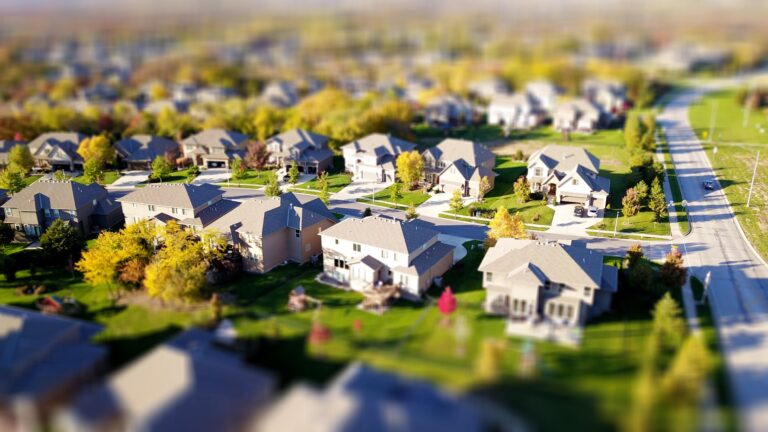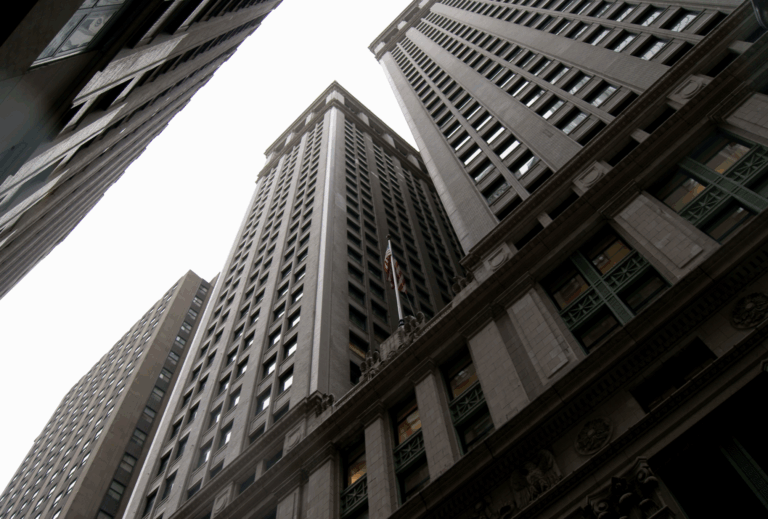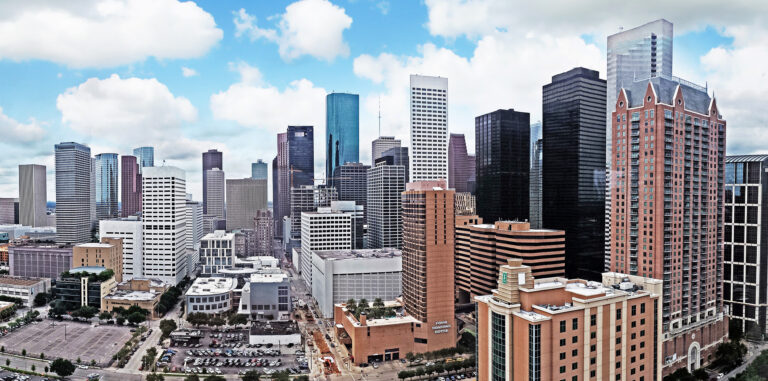Physical Address
304 North Cardinal St.
Dorchester Center, MA 02124
Physical Address
304 North Cardinal St.
Dorchester Center, MA 02124

We are blessed and cursed to live in times in which most smart people are expected to have an opinion on zoning. Blessed, in that zoning is arguably the single most important institution shaping where we live, how we move around, and who we meet. Cursed, in that zoning is notoriously obtuse, with zoning ordinances often cloaked in jargon, hidden away in PDFs, and completely different city-to-city. Given this unusual state of affairs, I’m often asked, “What should I read to understand zoning?” To answer this question, I have put together a list of books for the zoning-curious. These have been broken out into three buckets: “Introductory” texts largely lay out the general challenges facing cities, with—at most—high-level discussions of zoning. Most people casually interested in cities can stop here. “Intermediate” texts address zoning specifically, explaining how it works at a general level. These texts are best for people who know a thing or two about cities but would like to learn more about zoning specifically. “Advanced” texts represent the outer frontier of zoning knowledge. While possibly too difficult or too deep into the weeds to be of interest to most lay observers, these texts should be treated as essential among professional planners, urban economists, and urban designers. Before I start, a few obligatory qualifications: First, this not an exhaustive list. There were many great books that I left out in order to keep this list focused. Maybe you feel very strongly that I shouldn’t have left a particular book out. That’s great! Share it in the comments below. Second, while these books will give you a framework for interpreting zoning, they’re no substitute for understanding the way zoning works in your specific city. The only way to get that knowledge is to follow your local planning journalists, attend local […]

As zoning has become more restrictive over time, the need for “safety valve” mechanisms—which give developers flexibility within standard zoning rules—has grown exponentially. U.S. zoning officially has two such regulatory relief mechanisms: variances and special permits. Variances generally provide flexibility on bulk rules (e.g. setbacks, lot sizes) in exceptional cases where following the rules would entail “undue hardship.” Special permits (also called “conditional use permits”) generally provide flexibility on use rules in cases where otherwise undesirable uses may be appropriate or where their impacts can be mitigated. An extreme grade change is one reason why a lot might receive a variance, as enforcing the standard setback rules could make development impossible. Parking garages commonly require special use permits, since they can generate large negative externalities if poorly designed. Common conditions for permit approval include landscaping or siting the entrance in a way that minimizes congestion. (Wikipedia/Steve Morgan) In addition to these traditional, formal options, there’s a third, informal relief mechanism: spot zoning. This is the practice of changing the zoning map for an individual lot, redistricting it into another existing zone. Spot zonings are typically administered where the present zoning is unreasonable, but the conditions needed for a variance, special permit, or a full neighborhood rezoning aren’t. In many states, spot zonings are technically illegal. The thinking is that they are arbitrary in that they treat similarly situated lots differently. But in practice, many planning offices tolerate them, usually bundling in a few nearby similarly situated lots to avoid legal challenge. An example of a spot zoning. Variances, special permits, and spot zonings are generally considered to be the standard outlets for relief from zoning. But there’s a fourth mechanism that, to my knowledge, hasn’t been recognized: let’s call it the “spot text amendment.” Like spot zonings, spot text amendments […]

Over the past few years, Japanese zoning has become popular among YIMBYs thanks to a classic blog post by Urban kchoze. It’s easy to see why: Japanese zoning is relatively liberal, with few bulk and density controls, limited use segregation, and no regulatory distinction between apartments and single-family homes. Most development in Japan happens “as-of-right,” meaning that securing permits doesn’t require a lengthy review process. Taken as a whole, Japan’s zoning system makes it easy to build walkable, mixed-use neighborhoods, which is why cities like Tokyo are among the most affordable in the developed world. But praise for Japanese zoning skirts an important meta question: Why did U.S. zoning end up so much more restrictive than Japanese zoning? To frame the puzzle a different way, why did U.S. and Japanese land-use regulation—which both started off quite liberal—diverge so dramatically in terms of restrictiveness? I will suggest three factors; the first two set out the “why” for restrictive zoning and the third sets out the “how.” Any YIMBY efforts to liberalize cities in the long term must address these three factors. First, the U.S. privileges real estate as an investment where Japan does not, incentivizing voters to prohibit new supply with restrictive zoning. Second, most public services in the U.S. are administered at the local level, driving local residents to use exclusionary zoning to “preserve” public service quality. Third, the U.S. practice of near-total deference to local land-use planning and widespread use of discretionary permitting creates a system in which local special interests can capture zoning regulation and remake it around their interests. At the outset, why might Americans voters demand stricter zoning than their Japanese counterparts? One possibility is that they are trying to preserve the value of their only meaningful asset: their home. In the U.S., we use housing […]

With the Democrats scrambling to come up with a legislative agenda after their November takeover of the House of Representatives, an old idea is making a comeback: a “Green New Deal.” Once the flagship issue of the Green Party, an environmental stimulus package is now a cause de celebre among the Democratic Party’s progressive wing. While it looks like the party leadership isn’t too receptive to the idea, newly-elected Representative Alexandria Ocasio-Cortez has spearheaded legislation designed to create a “Select Committee for a Green New Deal.” The mandate of the proposed committee is ambitious, possibly to a fault. At times utopian in flavor, the committee would pursue everything from reducing greenhouse gas emissions to labor law enforcement and universal health care. A recent plan from the progressive think tank Data for Progress is more disciplined, remaining focused on environmental issues, with clearer numerical targets for transitioning to renewable energy and reducing greenhouse gas emissions. Yet in all the talk about a Green New Deal, there’s a conspicuous omission that could fatally undermine efforts to reduce greenhouse gas emissions: little to no focus is placed on the way we plan urban land use. This is especially strange considering the outsized role that the way we live and travel plays in raising or lowering greenhouse gas emissions. According to the Environmental Protection Agency (EPA), transportation and electricity account for more than half of the US’ greenhouse gas emissions. As David Owen points out in his book “Green Metropolis,” city dwellers drive less, consume less electricity, and throw out less trash than their rural and suburban peers. This means that if proponents of the Green New Deal are serious about reducing carbon emissions, they will have to help more people move to cities. One possible reason for this oversight is that urban planning […]

It’s an understatement to say that zoning is a dry subject. But in a new video for the Institute for Humane Studies, Josh Oldham and Professor Sanford Ikeda (a regular contributor to this blog) manage to breath new life into this subject, accessibly explaining how zoning has transformed America’s cities. From housing affordability to mobility to economic and racial segregation to the Jacobs-Moses battle, they hit all the key notes in this succinct new video. If you need a go-to explainer video for the curious new urbanists, this is the one. Enjoy!

When I first became interested in urban planning, I believed a piece of professional mythology that went like this: “For all its faults, Euclidean zoning was a well-meaning effort to expand nuisance regulation in the face of the urban industrialization. It was later practitioners who used zoning for selfish and exclusionary purposes.” While not totally without basis, I now think this view is wrong. Today I would like to show how the iconic example of a nuisance that supposedly motivated Euclidean zoning—the Equitable Life Building in New York City—was in large part controversial because it threatened the interests of existing landlords. The Equitable Life Building at 120 Broadway was completed in 1915. A vanity project of an industrialist—Thomas Coleman duPont—as so many skyscrapers were and are, the projected stood 42-stories high across an entire block without setbacks, adding a startling one and a quarter million square feet of rentable office space to Lower Manhattan. Needless to say, some New Yorkers weren’t happy. But why? The conventional wisdom holds that the Equitable Life Building caused such a stir because it literally cast a shadow over the rest of the neighborhood. Indeed, the building cast a shadow stretching nearly a fifth of a mile across Broadway. But it wasn’t just the shadows that made the Equitable Life Building so uniquely audacious—after all, it wasn’t the tallest building in the neighborhood (this honor would go to the Woolworth Building, completed four years earlier 1912) and it wasn’t the first skyscraper to take up an entire city block without setbacks (by this point, the Flatiron Building was already an icon of the city). Rather, what made the project especially upsetting, on top of standard concerns about light and air, was that it was adding so much floor space at a time when the Lower […]

At first blush, the enterprise of interpreting the Jane Jacobs’ work might seem like one best left to the proud and peculiar few, or to put it less charitably, those of us with nothing better to do. Yet the forces of history militate against this apathy: Jane Jacobs has emerged as quite possibly the most important figure in North American urban planning in the second half of the twentieth century. Her work is now taught in every urban theory and urban planning program worth its weight in ESRI access codes. She is responsible for introducing hundreds of thousands of people to planning and urbanism (including this author) and continues to shape how many of us think about cities. In one of my more popular blog posts here on Market Urbanism—and in a forthcoming book chapter—I argue that we should interpret Jane Jacobs as a spontaneous order theorist in the tradition of Adam Smith, Michael Polanyi, and F.A. Hayek. Built into her work is a profound appreciation of the importance of local knowledge, decentralized planning, and the spontaneous orders that structure urban life. Needless to say, this is not the prevailing interpretation of the importance and meaning of Jacobs’ work. Two very different alternative interpretations prevail. In this post, I argue that both interpretations are mistaken. Jane Jacobs, Form-Based Coder Many have taken Jacobs’ particular critiques of conventional U.S. zoning, often referred to as “Euclidean zoning,” as motivating a new form of zoning that takes into account her observations on design. In contrast to the mandates of Euclidean zoning, which proscribes land-use segregation and low densities, Jacobs celebrated mixtures of land uses and urban densities. Jacobs spends large sections of Death and Life discussing in detail particular urban designs that she sees as essential to fostering urban life. Much of “Part One” focuses on […]

In most of my discussions of Houston here on the blog, I have always been quick to hedge that the city still subsidizes a system of quasi-private deed restrictions that control land use and that this is a bad thing. After reading Bernard Siegan’s sleeper market urbanist classic, “Land Use Without Zoning,” I am less sure of this position. Toward this end, I’d like to argue a somewhat contrarian case: subsidizing private deed restrictions, as is the case in Houston, is a good idea insomuch as it defrays resident demand for more restrictive citywide land-use controls. For those of you who haven’t read my last four or five wonky blog posts on land-use regulations in Houston (what else could you possibly be doing?), here is a quick refresher. Houston doesn’t have conventional Euclidean zoning. Residents voted it down three times. However, Houston does have standard subdivision and setback controls, which serve to reduce densities. The city also enforces high minimum parking requirements outside of downtown. On top of these standard land-use regulations, the city heavily relies on private deed restrictions. Also known as restrictive covenants, these are essentially legal agreements among neighbors about how they can and cannot use their property, often set up by a developer and signed onto as a condition for buying a home in a particular neighborhood. In most cities, deed restrictions cover superfluous lifestyle preferences not already covered by zoning, including lawn maintenance and permitted architectural styles. In Houston, however, these perform most of the functions normally covered by zoning, regulating issues such as permissible land uses, minimum lot sizes, and densities. Houston’s deed restrictions are also different in that they are heavily subsidized by the city. In most cities, deed restrictions are overseen and enforced by parties to a deed, typically organized as a […]

Houston doesn’t have zoning. As I have written about previously here on the blog, this doesn’t mean nearly as much as you would think. Sure, Houston’s municipal government doesn’t segregate uses or expressly regulate densities. But as my Market Urbanism colleague Michael Lewyn has documented, city officials do regulate lot sizes, setbacks, and parking requirements. They also enforce private deed restrictions, which blanket many of the city’s residential neighborhoods. A deed restriction is a legal agreement among neighbors about how they can and cannot use their property. In most cities, deed restrictions are purely private and often fairly marginal, adding rules on top of zoning that property owners must follow. But in Houston, deed restrictions do most of the heavy lifting typically covered by zoning, including delineating permissible uses and design standards. Whenever I point out that Houston has relatively light land-use regulations (and is enjoying the benefits), folks often respond that the city’s deed restrictions are basically zoning. This couldn’t be further from the truth. Before I turn to the essential differences, it’s worth first observing how Houston’s deed restrictions are like any other city’s zoning. First, like zoning, Houston’s deed restrictions are almost universally designed to prop up the values of single-family houses. Despite the weak evidence for a use segregation-property values connection, this justification for zoning goes back to the program’s roots in the 1920s. Many of Houston’s nicest residential neighborhoods, like River Oaks and Tanglewood, follow this line of thinking, enforcing tight deed restrictions on residents that come out looking a lot like zoned neighborhoods in nearby municipalities like Bellaire and Jersey Village. Second, both zoning and Houston’s deed restrictions are enforced by government officials at taxpayer expense. In most other cities, deed restrictions are overseen and enforced by a private group like a homeowners association, […]

The great failing of modern land-use regulation is the failure to allow densities to naturally change over time. Let me explain. Imagine you are trying to sell a property you own in a desirable inner suburban neighborhood in your town. The lot is 4,000 square feet and hosts an old 4,000 square-foot home. There is incredible demand for housing in this area; perhaps the schools are good, or the amenities are nice, or the neighborhood sits adjacent to a major jobs center, meaning that residents can walk to work. I’ll leave the reasons to you. Who do you sell it to? You have at least two options: First, you could sell it to a wealthy individual, who would use the entire property as his home. He is willing to pay the market rate for single-family homes like this, which in this case is $300,000. Under current financing, he would likely have a monthly mortgage payment in the ballpark of $1,300. Second, you could sell it to a developer who intends to subdivide the house into four 1,000 square foot one-bedroom apartments, renting each of them at a market rate of $500 to service workers who commute to downtown. After factoring in expenses, her annual net operating income would be around $20,160. Assuming a multifamily cap rate of 6.0.%, this means that she could pay up to $336,000 for your property. Based on this analysis, who do you sell it to? The answer is obvious: you will sell it to the multifamily developer who will subdivide and rent out the house, not necessarily because you’re a bleeding heart urbanist, but in order to maximize your earnings. As rents in the area rise, the pressure to sell to a buyer who would densify the property will only grow. The prospective mansion buyer […]